Key Ghettos and Camps
More about Lodz Ghetto

In the Lodz ghetto in Lodz, Poland, Jewish youth as young as ten years old were put to work for the German war effort. The ghetto leadership opened vocational schools to train Jews for forced labour. Mordechai Chaim Rumkowski, the chairman of the Lodz ghetto Jewish council, believed that as long as they provided the Nazis with labour, the Jews would be safe. This proved not to be the case.
A child holding a soup bowl crosses a flooded street on a plank of wood in the Lodz ghetto. Lodz, Poland, circa 1940–1944.
United States Holocaust Memorial Museum, courtesy of Arie Ben Menachem.
More about Warsaw Ghetto
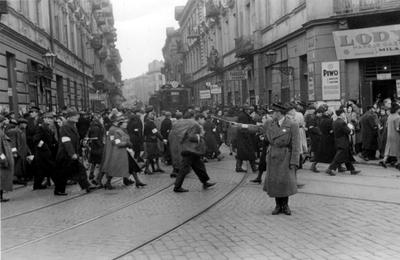
The Warsaw ghetto in Warsaw, Poland, was the largest ghetto. Over 400,000 Jews were confined there. CENTOS, a Jewish organization formed in 1924, was very active in the Warsaw ghetto caring for children and orphans. It established soup kitchens, organized underground schools, provided care and kept youth off the dangerous ghetto streets.
A Jewish policeman directing foot traffic in the Warsaw ghetto. Warsaw, Poland, 1941.
Yad Vashem Photo Archive, Jerusalem. 26BO7.
More about Transnistria Ghettos and Camps
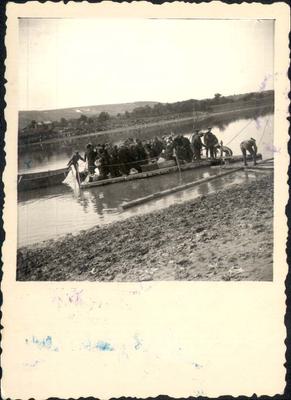
After the region of Transnistria in the Ukrainian borderlands was conquered by German and Romanian forces in summer 1941, Romania set up a network of ghettos and camps where Jews were confined. Though they were lacking in resources, Jewish women who had been deported to Transnistria set up schools for children and teenagers, often operating out of orphanages. Along with providing an education, these schools attended to children’s basic needs, such as food and medical care.
Jews being transferred across the Dniester River in a raft, on their way to Transnistria. Moghilev-Podolski (now Mohyliv-Podilskyi, Ukraine), 1942.
Yad Vashem Photo Archive, Jerusalem. 90DO8.
More about Theresienstadt Ghetto-Camp
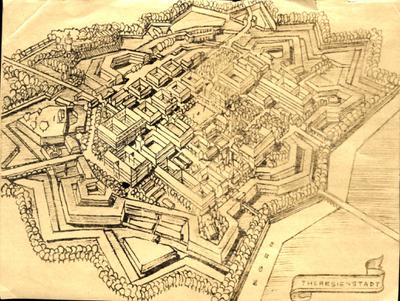
Theresienstadt was a site in the walled town of Terezín in Bohemia and Moravia (now Czech Republic) that was used to imprison primarily Czech, German and Austrian Jews. It had features of both a ghetto and a camp. Children and youth were housed in separate buildings from their parents and formal education was forbidden. Still, lessons, sports and creative activities took place in the children’s barracks. Many Jewish intellectuals and artists were sent there and contributed to the cultural activities in Theresienstadt.
A sketch of Theresienstadt. Place and date unknown.
Yad Vashem Photo Archive, Jerusalem. 933/8/31.
More about Auschwitz-Birkenau Killing Centre
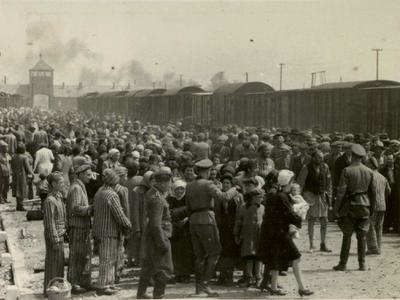
Auschwitz-Birkenau was a Nazi killing centre in Oświęcim, Poland, where over one million people were murdered, mainly Jews. Some prisoners were kept alive to be used for forced labour. They were separated into men’s and women’s barracks. For a brief time between 1943 and 1944, Auschwitz-Birkenau housed the Czech family camp, which was made up of prisoners from Theresienstadt. Here, whole families were kept together. The family camp had a barracks that served as a children’s classroom and library. In July 1944, most of the Jews who lived in this part of the camp were murdered.
Men, women and children disembarking from the trains at Auschwitz-Birkenau. Oświęcim, Poland, 1944.
Yad Vashem Photo Archive, Jerusalem. 14DO9.
More about Buchenwald Concentration Camp
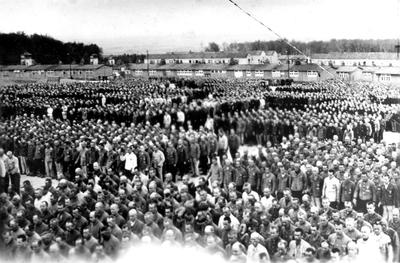
Buchenwald was a large concentration camp complex near Weimar, Germany, where prisoners were subjected to forced labour and were used for medical experiments. When groups of both Jewish and non-Jewish children and adolescents started arriving at Buchenwald in 1944, prisoners launched an organized effort to keep them alive, and established a children’s barracks in early 1945. The prisoners helped protect the children from the Nazi guards and led lessons and activities in secret.
Inmates stand for a roll call. Buchenwald, near Weimar, Germany, date unknown.
Yad Vashem Photo Archive, Jerusalem. 6CO6.